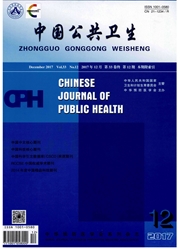

 中文摘要:
中文摘要:
目的观察外周血基因组DNA端粒长度与肺癌危险性的关系。方法用荧光定量PCR法检测145例肺癌患者、145名正常对照和145名焦炉工人外周血基因组DNA相对端粒长度。结果肺癌组端粒长度明显短于对照组(P=0.028),职业暴露组端粒长度明显短于肺癌组(P=0.005)和对照组(P〈0.001);按对照组端粒长度分4组,随着端粒的缩短,肺癌的危险性增加(Ptrend〈0.001);按对照组端粒长度中位数把样本分为2组发现,与长端粒组比较,端粒变短明显增加肺癌的危险性(调整OR=2.337,95% CI为1.413~3.866);对照组中,随着年龄增加,端粒缩短(P〈0.001)。结论端粒缩短可增加肺癌的危险性,可能是肺癌发展早期过程中的一项重要的生物标志。
 英文摘要:
英文摘要:
Objective To explore the association between telomere length and the risk of lung cancer. Methods Relative telomere length in genomic DNA extracted from peripheral blood leukocytes was measured with quantitative polymerase chain reaction among 145 lung cancer patients,145 healthy controls,and 145 coke-oven workers(exposed group). Results Telomere length in lung cancer patients was significantly shorter than in controls(1.24±0.88 versus 1.47±1.06,P=0.028).The exposed group exhibited a significantly shorter telomere length(0.94±0.72) than lung cancer patients(P=0.005) and healthy controls(P0.001).When the subjects were categorized into quartiles based on the telomere length of healthy controls,the risk of lung cancer was found to increase as telomere length shortened(Ptrend0.001).Compared to the individuals with long telomere length,individuals with short telomere length had a significantly increased risk of lung cancer(adjusted odds ratio=2.337,95% confidence interval:1.413-3.866).Furthermore,telomere length in the controls was significantly shorter in association with aging(P0.001). Conclusion The results suggest that shorter telomere length may be associated with a higher risk of lung cancer and could be used as an early marker for susceptibility to lung cancer.
 同期刊论文项目
同期刊论文项目
 同项目期刊论文
同项目期刊论文
 期刊信息
期刊信息
